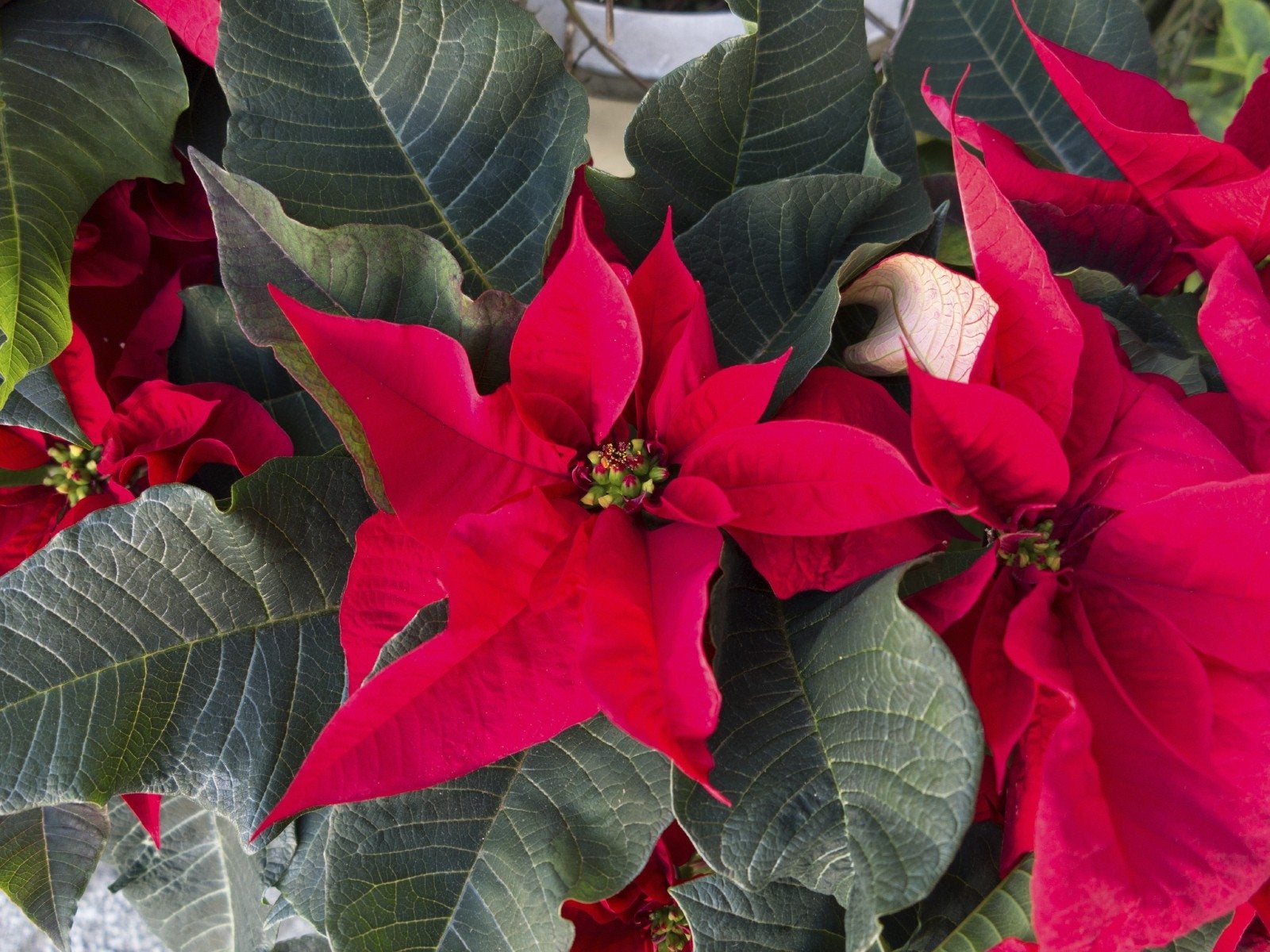Poinsettia Growing Zones – Information On Poinsettia Cold Tolerance


Poinsettias are familiar plants around the winter holidays. Their bright colors chase winter's gloom from the dark corners of the home and their ease of care make these plants perfect for interior gardening. Poinsettias are native to Mexico, which means the United States Department of Agriculture poinsettia growing zones are only 9 to 11. But what is the actual cold hardiness of poinsettias? You need to know what temperatures can damage or kill your plant if you are undertaking poinsettia care.
Is Poinsettia Hurt by Cold?
In their native region, poinsettias can grow up to 10 feet (3 m.) and produce huge bushes with the characteristic flaming leaves. As a houseplant, these lovely plants are usually sold as container specimens and rarely achieve more than a few feet (0.5 to 1 m.) in height. Once the brilliant leaves fall, you may choose to move the plant outdoors… but be cautious. Poinsettia frost damage can occur at warmer temperatures than you might realize. Poinsettias grow wild in Mexico and Guatemala, warm regions with mild nights. The blooms are actually colorful bracts, which appear when the inconspicuous flowers arrive, and persist months after the flowers are spent. However, eventually, the colorful bracts will fall and you will be left with a little, green bush. You can move the plant outdoors but poinsettia frost damage is a real threat if your area's temperatures dip below 50 degrees Fahrenheit (10 C.). At this range, the cold hardiness of poinsettias is below its tolerant point and leaves will drop. If the plant experiences sustained temperatures of 50 F. (10 C.) or below, the entire root system will likely be killed. For this reason, only grow the plant outdoors in summer and make sure it is back inside before any chance of cold appears.
Poinsettia Growing Zones
Check with your local extension office to find the date of the first and last frost in your area. This will give you an idea of when it is safe to bring the plant outdoors. Of course, you should also wait until ambient temperatures are at least 70 F. (21 C.) during the day and are not falling below 50 degrees Fahrenheit (10 C.) at night. This will be within survivable poinsettia growing zones. Usually, this is from June to July in temperate zones. Warmer zones may be able to move the plant outdoors earlier. If you are going to try to re-bloom the plant, keep it in its pot and pinch new growth during the summer to keep the plant compact and contained. Fertilize every two weeks during summer with a liquid formula. Provide organic mulch around the root zone if you are in an area where surprise cold nights can occur in summer. When weather reports indicate temperatures will be below poinsettia cold tolerance, move the plant indoors.
Reblooming tips
Once you have gotten the plant indoors before temperatures hit the poinsettia cold tolerance level, you have won half the battle. Place the plant in a dark area from 5:00 p.m. to 8:00 a.m. from October to November (around Thanksgiving). Poinsettias need 14-16 hours of darkness to promote flowering for at least 10 weeks. Make sure the plant still has some sunlight during the day and continue to water when the soil is dry to the touch. Stop fertilizing once you see the plant begin to produce colorful bracts. With a little luck and protection from drafts and cold outdoor temperatures, the plant should thrive and may produce an impressive color display anew.
Gardening tips, videos, info and more delivered right to your inbox!
Sign up for the Gardening Know How newsletter today and receive a free copy of our e-book "How to Grow Delicious Tomatoes".

Bonnie Grant is a professional landscaper with a Certification in Urban Gardening. She has been gardening and writing for 15 years. A former professional chef, she has a passion for edible landscaping.
-
 Looking For Plants To Give You The Soft And Fuzzies? Try These 5 Fuzzy Leaf Plant Options
Looking For Plants To Give You The Soft And Fuzzies? Try These 5 Fuzzy Leaf Plant OptionsLovers of texture, drama, silver foliage and tactile plants will adore these special sensory garden additions. These fuzzy leaf plant options will leave you all aglow
By Susan Albert
-
 Get Ready For A Summer Of Hummers! Grow These Full Sun Hummingbird Plants and Flowers
Get Ready For A Summer Of Hummers! Grow These Full Sun Hummingbird Plants and FlowersIf you’re lucky enough to enjoy a sunny backyard, make sure you are maxing out on your pollinator opportunities and grow these full sun hummingbird plants and flowers
By Tonya Barnett